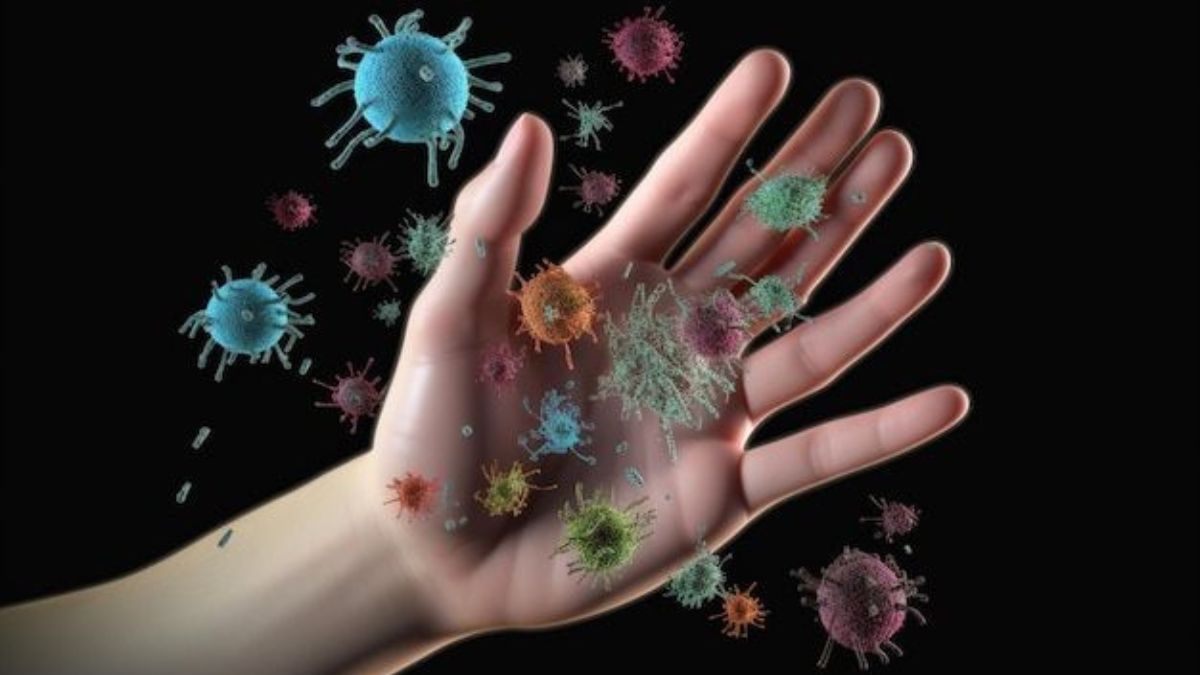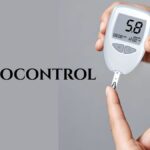In a world teeming with microscopic threats—bacteria, viruses, fungi, and more—staying healthy isn’t just about eating well or exercising. It’s also about understanding how to skip the germs that cause illness. Every day, we encounter thousands of invisible pathogens on surfaces, in the air, and even on our own skin. While our immune systems are remarkably equipped to handle many of these, reducing unnecessary exposure can dramatically lower your risk of falling ill.
“Skip the germs” isn’t just a catchy phrase—it’s a lifestyle mindset. It’s about making small, smart choices that add up to big health benefits. Whether you’re navigating flu season, returning to the office, or simply trying to stay well year-round, learning how to skip the germs effectively can empower you to take control of your health.
In this comprehensive guide, we’ll explore what germs are, how they spread, and—most importantly—how you can reduce your exposure through practical, evidence-based strategies. From handwashing and surface hygiene to ventilation and immune support, this article offers a full roadmap to help you skip the germs without compromising your daily life.
What Are Germs, and Why Do They Matter?
Germs is a general term for microscopic organisms that can cause disease. The main types include:
- Bacteria: Single-celled organisms that can cause strep throat, urinary tract infections, and food poisoning.
- Viruses: Smaller than bacteria, viruses cause illnesses like the flu, common cold, and COVID-19. They require a host to replicate.
- Fungi: Including yeasts and molds, fungi can lead to infections like athlete’s foot or yeast infections.
- Protozoa: Often found in contaminated water, protozoa cause diseases such as giardiasis.
Not all germs are harmful—many are essential for healthy digestion and immune function—but pathogenic (disease-causing) germs are the ones we aim to avoid. They can enter your body through your eyes, nose, mouth, or breaks in the skin.
Understanding how these germs spread is the first step in learning how to skip the germs successfully.
How Germs Spread: The Invisible Transmission Routes
Germs don’t need a plane ticket—they travel through everyday actions. Common transmission routes include:
1. Direct Contact
Shaking hands, hugging, or touching someone who’s sick can transfer germs directly. Even brief contact can be enough if that person has recently coughed into their hand or touched their face.
2. Indirect Contact (Fomites)
Germs can live on surfaces—doorknobs, elevator buttons, shopping carts, phones, and keyboards—for minutes to days. When you touch a contaminated surface and then your face, you may unknowingly invite germs inside.
3. Airborne Transmission
When someone sneezes, coughs, or even talks, they release respiratory droplets into the air. Some germs (especially viruses like influenza or SARS-CoV-2) can remain suspended in the air or travel several feet.
4. Food and Water
Consuming undercooked meat, unwashed produce, or unclean water can expose you to bacteria like Salmonella or E. coli.
5. Vectors
Insects like mosquitoes or ticks can carry and transmit diseases such as malaria or Lyme disease—though this is less common in daily urban settings.
Knowing these routes allows you to take targeted actions to skip the germs before they make you sick.
The Power of Hand Hygiene: Your First Line of Defense
Of all the strategies to skip the germs, none is more effective than proper hand hygiene. According to the CDC, handwashing can reduce respiratory illnesses like colds by up to 21% and diarrheal illnesses by up to 40%.
When to Wash Your Hands
You should wash your hands:
- Before eating or preparing food
- After using the restroom
- After blowing your nose, coughing, or sneezing
- After touching public surfaces (handrails, ATMs, etc.)
- After caring for someone who is sick
- After handling garbage or pet waste
How to Wash Properly
Use clean, running water and soap. Lather for at least 20 seconds—about the time it takes to hum “Happy Birthday” twice. Scrub all surfaces: palms, backs of hands, between fingers, under nails, and wrists. Rinse thoroughly and dry with a clean towel or air dryer.
Hand Sanitizer as a Backup
When soap and water aren’t available, use an alcohol-based hand sanitizer with at least 60% alcohol. Apply enough to cover all surfaces of your hands and rub until dry. Note: sanitizers don’t eliminate all germs (like C. difficile or norovirus) and are less effective on visibly dirty hands.
By making hand hygiene a habit, you consistently skip the germs that hitch a ride on your skin.
Cleaning vs. Disinfecting: Know the Difference
Keeping your environment clean is another critical way to skip the germs, but it’s important to understand the distinction between cleaning and disinfecting.
- Cleaning removes dirt, dust, and some germs from surfaces using soap or detergent and water. It lowers germ numbers but doesn’t kill them.
- Disinfecting uses chemicals (like bleach or EPA-registered disinfectants) to kill germs on surfaces. It doesn’t necessarily clean dirty surfaces but reduces the risk of infection.
High-Touch Surfaces to Focus On
Regularly disinfect these areas:
- Light switches
- Door handles (home and car)
- Remote controls
- Phones and tablets
- Kitchen countertops and sink faucets
- Bathroom fixtures
- Computer keyboards and mice
A simple routine—wiping down your phone daily or disinfecting doorknobs weekly—can significantly reduce your germ exposure and help you skip the germs that linger in your personal space.
Smart Habits for Public Spaces
Public areas are hotspots for germ transmission. From grocery stores to public transit, you’re constantly interacting with shared surfaces and people. However, with awareness, you can navigate these spaces more safely.
In Grocery Stores
- Use disinfectant wipes on cart handles.
- Avoid touching your face while shopping.
- Opt for contactless payment to reduce hand-to-hand contact.
- Wash or sanitize your hands after returning home.
On Public Transportation
- Hold onto rails or straps only when necessary.
- Avoid touching your phone or face during your ride.
- Wear a mask during peak flu or virus seasons—it filters airborne particles and reminds you not to touch your nose or mouth.
In Offices and Schools
- Keep personal items (pens, water bottles) separate.
- Wipe down your desk and keyboard daily.
- Encourage coworkers or classmates to stay home if sick.
These small changes add up. They’re part of a proactive mindset that helps you skip the germs in high-risk environments without isolating yourself.
The Role of Masks and Respiratory Etiquette
While mask-wearing surged during the pandemic, its value in routine germ prevention remains underappreciated. Masks can significantly reduce the spread of respiratory viruses—not just by protecting you from others, but by preventing you from spreading germs if you’re asymptomatic.
When to Consider Wearing a Mask
- During peak cold and flu season in crowded indoor spaces
- If you have mild symptoms but must go out
- In healthcare settings or when visiting vulnerable individuals
Practice Good Respiratory Hygiene
- Cough or sneeze into your elbow, not your hand.
- Dispose of tissues immediately and wash your hands afterward.
- Avoid close contact with people who are coughing or sneezing.
These behaviors are simple yet powerful. They reflect community care and personal responsibility, further supporting your goal to skip the germs—and protect others in the process.
Boosting Your Body’s Natural Defenses
While avoiding germs is key, strengthening your immune system ensures that if exposure happens, your body is ready to fight back.
Nutrition
A diet rich in fruits, vegetables, whole grains, lean proteins, and healthy fats provides essential vitamins and minerals. Key immune-supporting nutrients include:
- Vitamin C (citrus fruits, bell peppers)
- Vitamin D (sunlight, fatty fish, fortified foods)
- Zinc (nuts, seeds, legumes)
- Probiotics (yogurt, kefir, fermented foods)
Sleep
Chronic sleep deprivation weakens immune response. Aim for 7–9 hours per night to maintain optimal immune function.
Exercise
Moderate physical activity—like brisk walking or cycling—improves circulation and immune cell activity. Just 30 minutes a day can make a difference.
Stress Management
Chronic stress elevates cortisol, which suppresses immunity. Practice mindfulness, deep breathing, or hobbies that relax you.
These habits don’t directly kill germs, but they fortify your internal defenses so you’re better prepared—making it easier to skip the germs with confidence.
Travel Tips: Staying Germ-Free on the Go
Travel increases exposure to new environments and unfamiliar germs. Airplanes, hotels, and rental cars are germ reservoirs, but smart habits can keep you protected.
Before You Go
- Pack travel-sized hand sanitizer, disinfectant wipes, and tissues.
- Bring your own pillow, blanket, or neck rest for flights.
- Consider a portable UV sanitizer for phones or small items.
During Travel
- Wipe down tray tables, armrests, seatbelt buckles, and overhead buttons.
- Avoid using airplane lavatory surfaces directly—use a paper towel to open doors or flush.
- Stay hydrated; dry nasal passages are more vulnerable to infection.
At Your Destination
- Disinfect hotel room surfaces: remote, light switches, faucet handles.
- Use your own water bottle instead of drinking from public fountains.
- Wash your hands before eating, even if you’ve sanitized them.
Travel doesn’t have to mean getting sick. With preparation, you can continue to skip the germs wherever you go.
Teaching Kids to Skip the Germs
Children are germ magnets—they touch everything, share toys, and often forget to wash their hands. Teaching them healthy habits early sets a lifetime foundation for wellness.
Fun Ways to Encourage Hygiene
- Sing a 20-second handwashing song together.
- Use glitter to demonstrate how germs spread (and how washing removes them).
- Offer colorful, alcohol-free hand sanitizers for school.
Set a Good Example
Kids mimic adult behavior. When they see you washing your hands before meals or covering your cough, they’re more likely to do the same.
Keep Sick Kids Home
It’s tempting to send a child with a mild cold to school, but this spreads illness. Reinforce that staying home when sick is a responsible choice.
By making germ awareness part of family culture, you help your children learn to skip the germs naturally and consistently.
Common Myths About Germs—and the Truth
Misinformation can lead to ineffective or even harmful habits. Let’s debunk a few myths:
Myth 1: “All germs are bad.”
Truth: Many germs are beneficial. Your gut microbiome, for example, relies on “good” bacteria for digestion and immunity.
Myth 2: “Antibacterial soap is better than regular soap.”
Truth: For most home uses, plain soap is just as effective. Overuse of antibacterial products may contribute to antibiotic resistance.
Myth 3: “You can ‘boost’ your immune system with supplements alone.”
Truth: No magic pill replaces a healthy lifestyle. Supplements help only if you have a deficiency.
Myth 4: “If you don’t feel sick, you can’t spread germs.”
Truth: Many infections are contagious before symptoms appear (e.g., flu, colds, COVID-19).
Staying informed helps you focus on what truly works to skip the germs—not what’s trendy or fear-based.
The Bigger Picture: Community Health and Responsibility
Choosing to skip the germs isn’t just about personal health—it’s about protecting your community. When fewer people carry and spread pathogens, everyone benefits, especially those who are vulnerable: the elderly, newborns, and people with chronic illnesses or weakened immune systems.
Vaccination, staying home when sick, and practicing good hygiene are all acts of social responsibility. In this sense, skip the germs becomes a shared mission, not just an individual goal.
During outbreaks or pandemics, these collective efforts can flatten curves, prevent healthcare overload, and save lives. Your small actions ripple outward.
Conclusion: Make “Skip the Germs” a Daily Practice
Staying healthy in a germ-filled world doesn’t require perfection—it requires consistency. By integrating simple, science-backed habits into your routine, you can significantly reduce your risk of illness. From washing your hands and disinfecting surfaces to eating well and managing stress, every choice contributes to your ability to skip the germs.
Remember, the goal isn’t to live in fear of germs, but to coexist wisely. Your immune system is strong, but it works best when you give it a fighting chance by limiting unnecessary exposure. Whether you’re at home, work, school, or traveling, the principles remain the same: be aware, be prepared, and be kind—to yourself and others.
So start today. Wipe down your phone. Wash your hands before dinner. Keep sanitizer in your bag. Encourage your kids to cover their coughs. These acts may seem small, but together, they form a powerful shield. Because when you skip the germs, you’re not just avoiding sickness—you’re embracing a healthier, more resilient life.
And as you adopt this mindset, remember: skip the germs isn’t a one-time action. It’s a lifelong practice. One that pays dividends in energy, productivity, and peace of mind. So go ahead—live fully, connect deeply, and always, always skip the germs.












